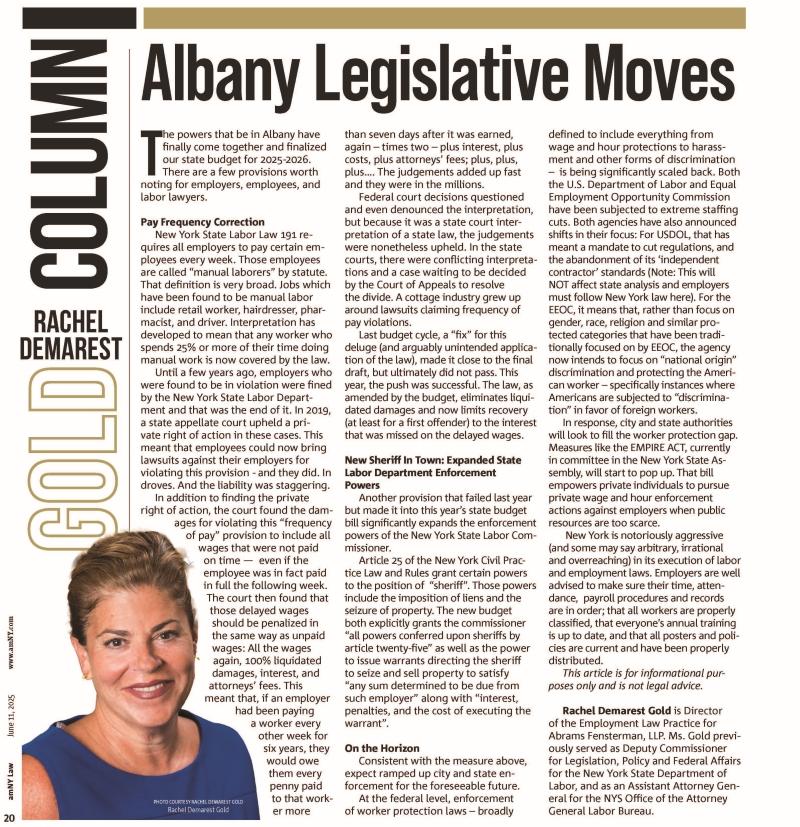
New York Prescription Requirements
and What It Means For Doctors
Michael S. Kelton, Esq., Jordan Fensterman, Esq.
& David Hollander, Law Clerk
On Sunday March 27, 2016, New York’s Internet System for Tracking Over Prescribing (I-STOP) went into full effect. As of August 2013 most prescribers were already required to check I-STOP to ensure patients were not receiving prescriptions from multiple providers in New York in excess of their recommended dosage. Now the program taking full effect means that physicians, dentists, and clinicians must use the state’s electronic prescribing system, thus phasing out paper pads from circulation. Physicians were required to obtain a waiver if they wished to opt-out of this mandatory electronic prescribing system.
Doctors affiliated with nursing homes, compounding pharmacists who make customized medicines, and physicians involved in clinical trials were granted a blanket waiver allowing them to write or dispense medications using paper prescriptions. Long-term care facilities have until March 27, 2017 to comply with the electronic prescribing system. Some individual physicians and dentists have been granted waivers, most are older and plan to retire within the next few years. Nursing homes and other large hospitals have been granted waivers due the complexity of rolling out new technical systems among big institutions. Nursing homes, specifically, have until next year to comply because of the fact that most doctors do not work in nursing homes directly. These doctors will still be allowed to fax or phone prescriptions to pharmacies. Waiver exemptions include veterinaries, circumstances where electronic prescribing is not available due to technological or electric failure, and prescriptions to dispense medication outside the state,
In 2012, New York enacted I-STOP to curtail the growing problem of prescription opioid abuse and deaths. In 2004, there were 341 opioid related deaths while in 2013 there were 1,227 deaths. Part of the law had already been in effect since 2013, with an online registry that lists all controlled substances recently prescribed so that a doctor could identify patterns of abuse. New York is leading the nation with the push to go digital. The CDC only recently announced new prescriber guidelines in regards to opioids, but the guidelines are not as stringent as New York’s. In addition to curtailing the amount of prescribed medication, another goal of New York’s I-STOP program is to reduce “doctor shopping” (i.e. abusers who would go from one doctor to another either to obtain opioid based medication for personal use or to sell illegally on the streets).
So far, the results have been a mixed bag. Mandating costly and cumbersome technologies has been challenging for patients and doctors alike. There is a steep learning curve for practitioners who have been trained and accustomed to paper prescription pads for many years, sometimes many decades. Additionally, the online registry system can be easily gamed by simply changing one letter of a person’s name or by traveling to a prescriber in a State outside of New York. Currently, the Governor’s office estimates 60,000 of New York’s roughly 80,000 physician prescribers are up and running with certified systems.
In order to prescribe in New York, doctors, dentists, and clinicians must register with the Bureau of Narcotic Enforcement and prescribers must renew their registration every two years with the Department. This registration includes all prescribers, both for controlled substances and for non-controlled substances. Furthermore, physician assistants must also complete and submit the proper paperwork so that they can be in compliance with the law. Online registration is available through the Registration for Official Prescriptions and E-Prescribing System (ROPES).
The entire process can be completed online by filling out an application through the state’s Health Commerce System (HCS). All that is needed to apply for an HCS account is valid driver’s license. The HCS account is also utilized to update prescribers New York State Physician Profile. Once the HCS credentials are obtained, a prescriber may then begin the ROPES application, which entails prescriber’s name, contact information, State license number, DEA prescriber number, and the name of the certified E-prescribing software that will be used. Software must meet the DEA standard for online prescriptions, which includes a DEA audit certification or completion by a third party, two different factors of credentials, identity proofing, and registration with the Bureau of Narcotic Enforcement. Identity proofing verification needs to be conducted by Certified Authorities or Credential Service Providers that have been approved by General Services Administration Office of Technology Strategy/Division of Identity Management. Large institutional practices, which are themselves DEA registrants, are allowed to conduct identity proofing.
New York doctors must comply with the new electronic prescribing guidelines.
Abrams, Fensterman, Fensterman, Eisman, Formato, Ferrara & Wolf, LLP
630 3rd Avenue, 5th Floor
New York, NY 10017
Tel: (212) 279-9200 | Fax: (212) 279-0600
Email: [email protected]
1111 Marcus Avenue, Suite 107
Lake Success, NY 11042
Tel: (516) 328-2300 | Fax: (516) 328-6638
Email: [email protected]





